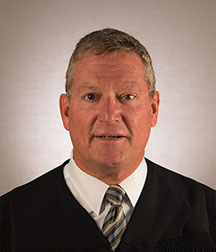The elements of a contract include the following: an offer, an acceptance, contractual capacity, consideration (the bargained-for legal benefit or detriment), a manifestation of mutual assent, and legality of object and of consideration. Kostelnik v. Helper (2002), 96 Ohio St.3d 1, 2002-Ohio-2985, 770 N.E.2d 58, ¶ 16. A meeting of the minds as to the essential terms of the contract is a requirement to enforcing the contract. Episcopal Retirement Homes, Inc. v. Ohio Dept. of Indus. Relations (1991), 61 Ohio St. 3d 366, 369, 575 N.E.2d 134.
Many contracts contain incorporation clauses. Black’s Law Dictionary (5th Ed. 1979) defines “incorporation by reference” as the “method of making one document …become a part of another separate document by referring to the former in the latter, and declaring that the former shall be taken and considered as a part of the latter the same as if it were fully set out therein.”
Incorporation clauses are legal provisions referencing other documents or agreements, which are then considered part of the contract. This means that the terms and conditions of the referenced document are incorporated into the contract by reference. The purpose of the incorporation clause is to avoid the need to repeat the same information in multiple documents and to ensure that all parties are aware of the terms and conditions of the referenced document. Further, incorporation clauses are often provided in a Contract to preclude the addition of outside evidence to determine the terms of the Contract.
Almost all contracts that we sue on HAVE an incorporation clause that says two things: (a) before and during: All agreements between the parties are incorporated into this contract and there are no other agreements between the parties and (b) after: All amendments to this agreement must be in writing and signed by both parties or they are ineffective. Contract integration calls for a prior understandings to be rejected in favor of a subsequent one containing a complete agreement. TRINOVA Corp. v. Pilkington Bros. P.L.C., 70 Ohio St.3d 271, 275 (1994).
An “integration clause is nothing more than the contract’s embodiment of the parol evidence rule, i.e., that matters occurring prior to or contemporaneous with the signing of a contract are merged into and superseded by the contract.” Rucker v. Everen Securities, Inc. (2002), 102 Ohio St.3d 1247, 2004-Ohio-3719, 811 N.E.2d 1141, ¶ 6. The rule prevents a party from introducing extrinsic evidence of negotiations occurring before or while the agreement was being finalized. Bellman v. American Internatl. Group, 113 Ohio St. 3d 323, ¶ 7 (2007).
There are exceptions to the law surrounding integration clauses and contracts. The parol evidence rule does not prohibit a party from introducing parol or extrinsic evidence for the purpose of proving fraudulent inducement. Drew v. Christopher Constr. Co., Inc. (1942), 140 Ohio St. 1, 23 Ohio Op. 185, 41 N.E.2d 1018, paragraph two of the syllabus. Specifically,
The principle which prohibits the application of the parol evidence rule in cases of fraud inducing the execution of a written contract * * * has been regarded as being as important and as resting on as sound a policy as the parol evidence rule itself. It has been said that if the courts were to hold, in an action on a written contract, that parol evidence should not be received as to false representations of fact made by the plaintiff, which induced the defendant to execute the contract, they would in effect hold that the maxim that fraud vitiates every transaction is no longer the rule; and such a principle would in a short time break down every barrier which the law has erected against fraudulent dealing.
Fraud cannot be merged; hence the doctrine, which is merely only another form of expression of the parol evidence rule, that prior negotiations and conversations leading up to the formation of a written contract are merged therein, is not applicable to preclude the admission of parol or extrinsic evidence to prove that a written contract was induced by fraud. Annotation, Parol-Evidence Rule; Right to Show Fraud in Inducement or Execution of Written Contract (1928), 56 A.L.R. 13, 34-36.
“It was never intended that the parol evidence rule could be used as a shield to prevent the proof of fraud, or that a person could arrange to have an agreement which was obtained by him through fraud exercised upon the other contracting party reduced to writing and formally executed, and thereby deprive the courts of the power to prevent him from reaping the benefits of his deception or chicanery.” 37 American Jurisprudence 2d (1968) 621-622, Fraud and Deceit, Section 451.
The Ohio Supreme Court explained further in Galmish v. Cicchini, stating,
However, the parol evidence rule may not be avoided “by a fraudulent inducement claim which alleges that the inducement to sign the writing was a promise, the terms of which are directly contradicted by the signed writing. Accordingly, an oral agreement cannot be enforced in preference to a signed writing which pertains to exactly the same subject matter, yet has different terms.” Marion Prod. Credit Assn. v. Cochran (1988), 40 Ohio St. 3d 265, 533 N.E.2d 325, paragraph three of the syllabus. In other words, “the parol evidence rule will not exclude evidence of fraud which induced the written contract. But, a fraudulent inducement case is not made out simply by alleging that a statement or agreement made prior to the contract is different from that which now appears in the written contract. Quite to the contrary, attempts to prove such contradictory assertions is exactly what the parol evidence rule was designed to prohibit.” Shanker, Judicial Misuses of the Word Fraud to Defeat the Parol Evidence Rule and the Statute of Frauds (With Some Cheers and Jeers for the Ohio Supreme Court) (1989), 23 Akron L.Rev. 1, 7.
Galmish v. Cicchini (2000), 90 Ohio St. 3d 22, 29.
Thus, ” the rule excluding parol evidence of collateral promises to vary a written contract does not apply where such contract is induced by promises fraudulently made, with no intention of keeping them * * *.” 37 American Jurisprudence 2d, supra, at 623, Section 452. However, the parol evidence rule does apply “to such promissory fraud if the evidence in question is offered to show a promise which contradicts an integrated written agreement. Unless the false promise is either independent of or consistent with the written instrument, evidence thereof is inadmissible.” Alling v. Universal Mfg. Corp. (1992), 5 Cal. App. 4th 1412, 1436, 7 Cal. Rptr. 2d 718, 734. Another common exception is that parol evidence will be permitted to clarify mistaken or ambiguous terms. Williams v. Spitzer Autoworld Canton, L.L.C., 122 Ohio St. 3d 546, 555 (2009).
The parol evidence rule, however, does not bar evidence of a subsequent agreement, modification of an agreement, or waiver of an agreement by language or conduct. Paulus v. Beck Energy Corp., 7th Dist. No. 16 MO 0008, 2017-Ohio-5716, ¶ 41. Additionally, the parol evidence rule does not apply to the introduction of a subsequent agreement between one party and a third party to determine issues unrelated to the meaning of a contract term. Wells Fargo Bank, N.A. v. Horn, 142 Ohio St. 3d 416, 416 (2015).
Another exception is proof of a “condition precedent to a contract.” Beatley v. Knisley, 183 Ohio App.3d 356, 2009-Ohio-2229, 917 N.E.2d 280, ¶ 15 (10th Dist.). “[A] condition precedent is one that is to be performed before the agreement becomes effective. It calls for the happening of some event, or the performance of some act, after the terms of the contract have been agreed on, before the contract shall be binding on the parties” Mumaw v. W. & Southern Life Ins. Co., 97 Ohio St. 1, 11, 119 N.E. 132, 15 Ohio L. Rep. 455 (1917).
The purpose of the parol evidence rule (and thereby the purpose of integration clauses) is to protect the integrity of written contracts and prevent a party from introducing extrinsic evidence of negotiations occurring before or while the agreement was being finalized. See Galmish v. Cicchini, 90 Ohio St.3d 22, 27, 2000 Ohio 7, 734 N.E.2d 782 (2000).
Thus, apart from these limited exceptions, incorporation clauses carry significant teeth with the courts; they are enforceable.










